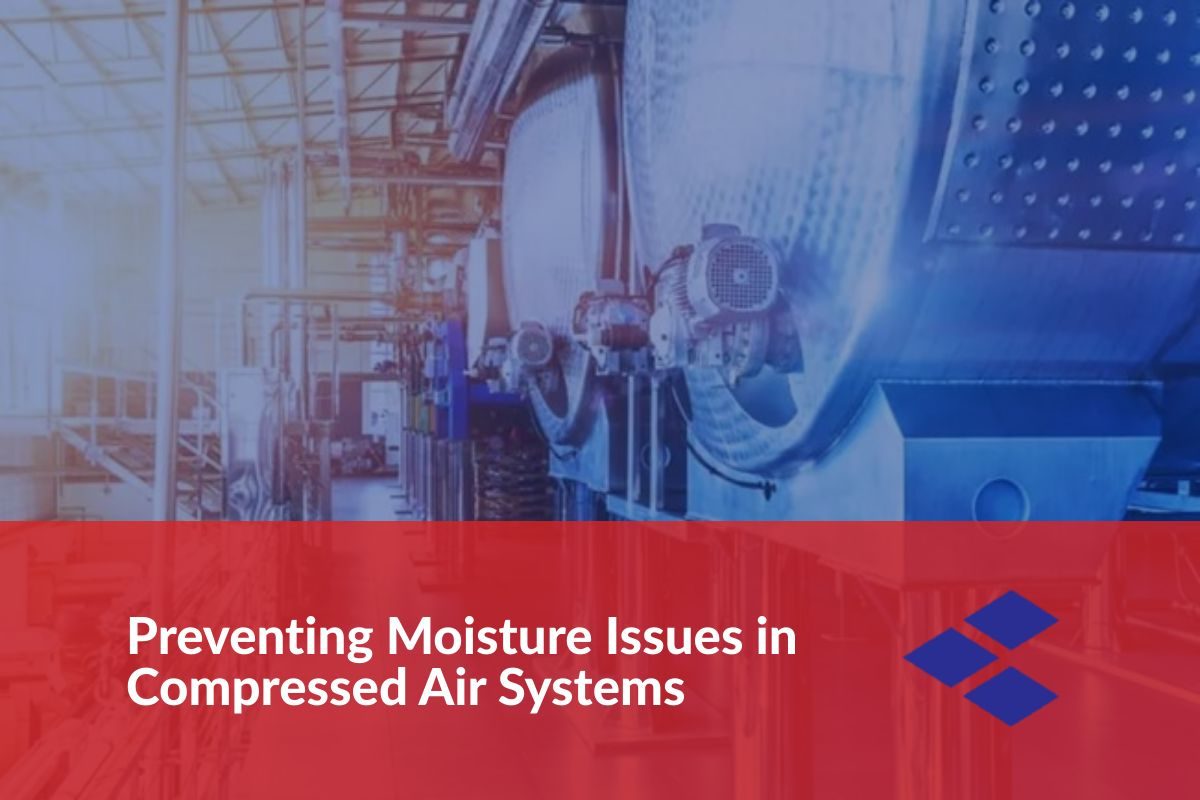
One common contributor to issues within a compressed air system is moisture. Keeping your system in good condition means finding ways to keep moisture out, as its presence can wreak havoc on even the most top-of-the-line compressed air systems. At ESA, we’re here to help you avoid the issues that moisture causes by keeping it out of your system entirely.
What Causes Moisture Issues in Compressed Air Systems?
While you may know that the presence of moisture in a compressed air system is an issue, what causes moisture to accumulate within compressed air systems in the first place? There are two common culprits when it comes to the accumulation of moisture in air compressor systems, and they both have to do with temperature.
First, increases in temperature can cause moisture to build up within a compressor system. This is especially common in pneumatic air lines. When temperatures increase, water evaporates, remaining airborne and causing humidity to build up in the air that pneumatic tools rely upon. When the air is compressed, the humidity is compounded, increasing the water in your system exponentially.
Second, rapid temperature changes have the potential to cause moisture build-up within a compressed air system. Whether the temperature change is within the system itself or simply in the ambient air of your business or factory, fluctuations in temperature cause the accumulation of moisture. This is especially true when the compressed air temperature is higher than the temperature of the location where the air is being delivered. All of these issues result in a decrease in air quality. Whether your operation is manufacturing paint, processing food, or your system only needs compressed air to clean parts or products, you don’t want to subject any of your products or system components to moist air that carries debris.
One less readily considered issue regarding moisture in compressed air systems is the loss of lubrication within your system. Moisture can quickly break down lubricants in your system, leading to premature wear and tear preventing them from functioning properly. Rubber seals within your system can also swell, stiffen, and deteriorate when exposed to moisture, resulting in component failure.
Moisture in your system has a negative impact on your bottom line. Whether because of component breakdown, lower air flow, or downtime spent searching for repairs or replacement parts, moisture in your system will cost your business money and reduce your profit margins.
Why is Moisture in Compressed Air Systems a Problem?
There are many reasons that moisture within your system will cause problems. The issues that most think of first are bacterial growth, promotion of scale, and rust build-up. Bacterial growth and mold are real threats to your system, as their accumulation will eventually cause reduced airflow. Additionally, mold and bacteria are potential health hazards if they come into contact with your end product. Pipe scale and rust also reduce the amount of airflow throughout your system. Eventually, these substances will flake off, clogging the inner workings of your system and, in worst-case scenarios, can cause total system failure.
Methods for Moisture Prevention in Compressed Air Systems
Luckily, there are various ways to help ensure your system is safe from moisture. First, ensure that you are draining your compressor regularly. Most air compressors drain through the bottom, allowing you to remove built-up water easily. Remember that during the hotter months, you will need to drain your system more often, as well as during times of higher demand on your compressor.
Do your best to keep temperatures consistent within your system. Temperature fluctuations cause water build-up, so keeping steady temps for your system is an easy way to maintain its function and prevent moisture accumulation.
Choosing the right materials for your system is also imperative for keeping moisture away. Some materials are more prone to rusting and scale build-up, so avoiding those materials will help increase your system’s integrity.
Last, alter your pipe directions when possible. Connect pipes at the top of the airline, instead of the bottom, where water will collect. While this precaution won’t eliminate the water, it will help limit the damage caused by moisture.
Why Trust the Experts at ESA?
We’re available at ESA for all your compressed air system needs. From installation to maintenance and repairs, the experts at ESA can help ensure your system is working at the peak of efficiency. We understand that you want the best service you can get at the lowest cost possible, and that’s what we strive to provide to our clients.
If you’ve tried other companies and weren’t satisfied, or you’re new to industrial air compressor systems, contact our technicians here at ESA and let us prove to you what an asset we’ll be to your application.
Arthur Pue
Arthur Pue is the President of Engineering Sales Associates. Connect with him on LinkedIn.
